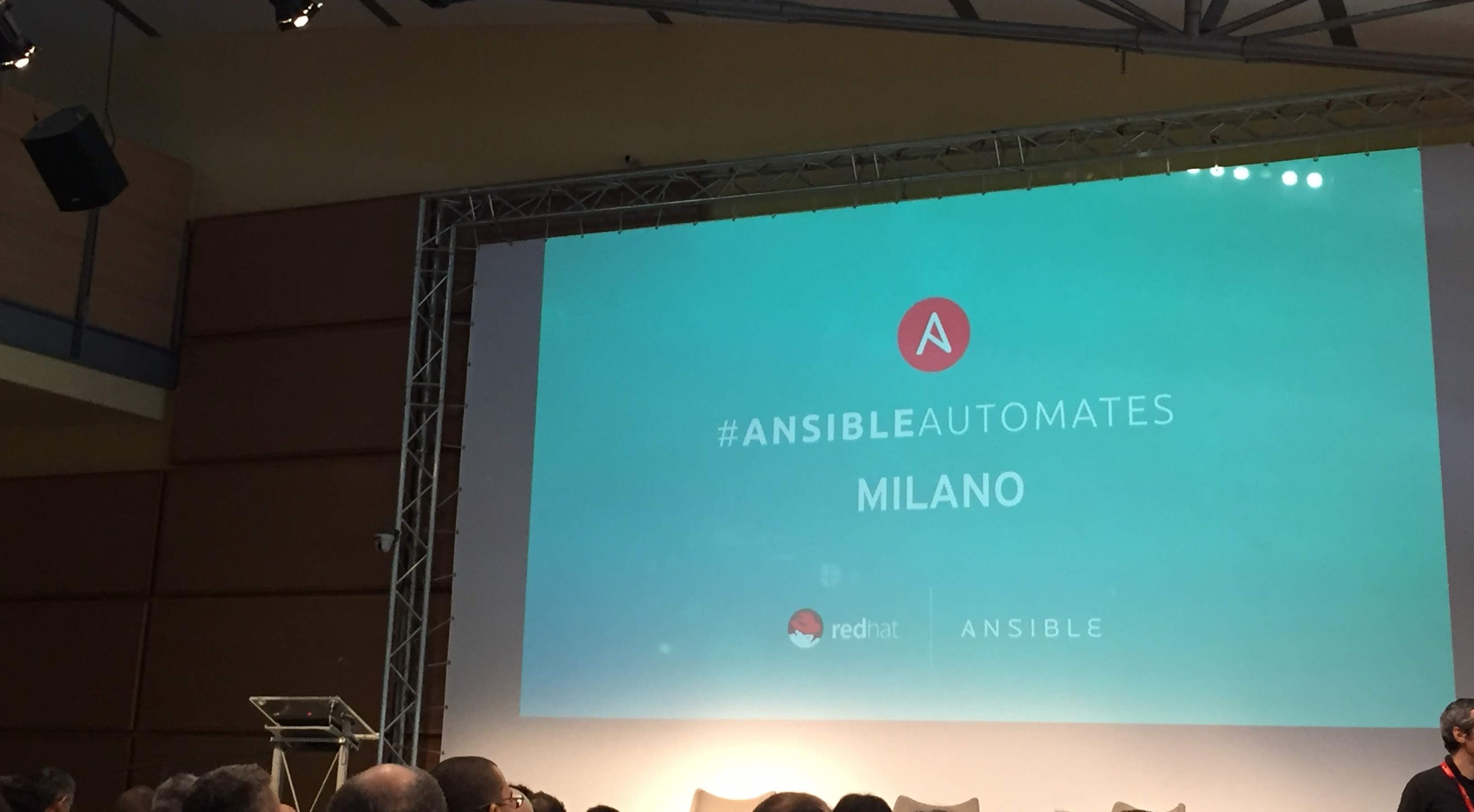Red Hat Ansible Automates - Milan
-
Costantina Capobianco
- 11 Feb, 2019
- 04 Mins read

On the past 7th February, I had the opportunity to attend to the first RedHat Ansible Automates in Milan, an event that was organized by Redhat and that is the first event fully dedicated to a single product: Ansible (here the official event link https://www.redhat.com/it/events/ansible-automates-milano-2019). The event was very interesting for me because I have been studying Ansible in the last months and now I'm working for a client that uses it everyday.
Now, let's talk about the Agenda of the day.
- Welcome and business overview, by G. Galli, Cloud Sales Lead, Red Hat
This was a welcome talk, during which the speaker presented the Agenda of the day, an overview of Ansible project growing during the last year and of its several applications in more and more IT areas. Ansible was born as a Linux OS configuration management tool, but during the years has become a tool for automation in middleware, application, container, network and so on.
- The Automated Enterprise - Ansible Product Overview & Roadmap, by A. Perilli, GM Management Strategy, Red Hat
This session was a presentation of Ansible product and its growth during the years. Ansible is currently one of the top 10 of open source projects on GIT, with 7.5k contributors. Moreover, Ansible currently covers a lot of areas: compute, OS, App platform, network and security and the only area not fully covered is storage. One of the common questions exposed during the speech is if automation will reduce jobs and how automation could change our way of working. The answer is that automation will not reduce jobs, but it will change the way of working, in order to address two new issues: scalability and complexity. The growing scale of IT infrastructures (hybrid cloud, public cloud and so on) and the growing complexity (microservices, containers, ...) could not be be managed in a fast and reliable way without automation. Then, Perilli talked about some automation pain points, that will be probably the future points of interest: Efficiency and Analytics (Are my playbooks good to perform the task I'm thinking about? Is there a way to perform it in the most efficient way?); Cost Justification (How much money do I save with automation?); Integration (Can I reach all infrastructure and application layers?) and some others.
- Roundtable with customers, with M. Capo, Cloud and Data Center Lead, Accenture - S. Bovo, Head of Linux System Office, SIA
This talk dealt with some customer's experience, from cloud solution with fully public or hybrid cloud, to the importance of automating the management of the IT infrastructures that are everyday more and more complex. They talked about how the time of VM provisioning is significantly reduced by using Ansible, how it increases the homogeneity of VM configurations and reduces human errors.
- Demo Ansible Engine and Ansible Tower, by R. Bergamini, Senior Solution Architect, Red Hat
During this session, there were two technical demos:
- os compliance: a playbook was executed in order to configure the operating system of a VM according to a list of given requirements. Then, using Ansible Tower, the same playbook was scheduled for a weekly execution, in order to check the OS compliance to the initial requirements during the time.
- disaster recovery automation : during the demo, a failure of a production stack (Gluster storage plus 4 VMs managed by RHEV) was simulated (with an Ansible playbook itself). Again, an ansible playbook was executed to replicate the same stack on the DR site: the 4 VMs and the Gluster storage were created in RHEV and started for fully functionality.
- Hybrid Cloud Automation (with demo), by M. Naldini, Solution Architects, Red Hat - A. Arrichiello, Solution Architect, Red Hat
During this session, there was a technical demo regarding the VM provisioning and configuration on an hybrid Cloud. The VMs were configured in the same way both on local site using RHEV and on Azure cloud Platform, using a workflow on Ansible Tower. This could be an example of scalability on cloud as needed.
- ** How to write your first playbook**, by L. Villa, Solution Architect, Red Hat
This was a session dedicated to people that doesn't know Ansible and have never tried it. Villa explained the structure of Ansible (tasks, plays, playbooks, variables management and precedence, and so on) and showed some simple examples.
- Ansible Networking, by P. Quidacciolu, Solution Architect, Red Hat
This technical demo dealt with networking automation using both Ansible and Ansible Tower. After a brief introduction about all networking tasks that could be executed from Ansible in a centralized and automated way, Quidacciolu showed a demo regarding how some routers could be configured to allow (or block) traffic between two sub-LAN.
- Ansible Security Automation, by M. Ferrari, Management Strategy Director, Red Hat
In the last session of the day, two demos about automating security with Ansible were presented. Ferrari showed the integration of Ansible with Splunk Enterprise Security for facing network threats in a very fast way. From Splunk console, operators can launch Ansible plugin (but playbooks could be executed even from command line, without using Splunk) in order to firstly enable a more verbose log (enabling Snort to send its log to rsyslog) and secondly, if needed, changing some firewall rules (on CheckPoint).
Since it was an event dedicated to a single product, I thought that not so much people would have taken part in it. Instead, a good surprise, a lot of people and customers are interested in Ansible and its usage. Overall the event was very interesting and I came back to work with much food for thoughts.